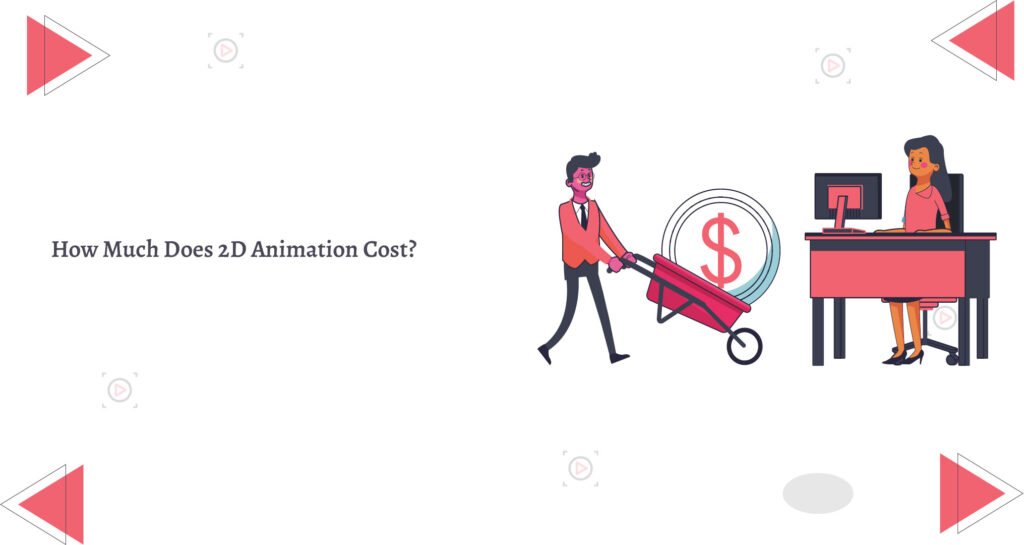
Whether you’re creating an explainer video, a social media ad, or a short film, 2D animation remains one of the most effective ways to bring ideas to life. It’s stylistically versatile, budget-friendly, and easier to produce than 3D—making it a top choice for startups, marketers, educators, and content creators in 2025.
But here’s the big question: How much does 2D animation actually cost in 2025?
This in-depth blog covers everything you need to know about 2D animation cost per minute 2025, along with a detailed pricing guide for 2D animation services, real-world examples, cost-saving tips, and the main factors affecting 2D animation pricing.
Whether you’re budgeting for a one-off project or building an ongoing content strategy, this guide will help you navigate the numbers with confidence.
Why 2D Animation is Still in Demand in 2025
With the rise of immersive 3D, AR, and AI-generated content, some might wonder if 2D animation is still relevant. The answer? Absolutely. In fact, it’s thriving—especially for brands that prioritize clarity, emotional resonance, and affordability.
Here’s why:
- It’s faster to produce than 3D.
- It’s more budget-friendly for small to mid-sized teams.
- It works well across platforms (web, mobile, video, etc.).
- It allows for artistic expression and stylized storytelling.
Now, let’s dive into what really matters—how much does it cost?
2D Animation Cost Per Minute 2025: The Numbers
One of the most common questions we hear is: How much does 2D animation cost per minute in 2025?
While pricing depends on many factors (we’ll cover those soon), here’s a general breakdown by production level:
| Type of Animation | Estimated Cost Per Minute (USD) |
|---|---|
| Basic Motion Graphics (Text & Icons) | $500 – $1,200 |
| Standard Explainer (Characters + Voiceover) | $1,500 – $4,000 |
| Premium Quality (Custom Art, Story-Driven) | $5,000 – $10,000+ |
These costs typically include:
- Scriptwriting
- Storyboarding
- Illustration and design
- Animation
- Sound design and music
- Voiceover (in some cases)
This range reflects average industry rates. For custom animation with high-end visuals or cinematic storytelling, prices may exceed $15,000 per minute. Knowing your style and goals is crucial when estimating your 2D animation cost per minute 2025.
Pricing Guide for 2D Animation Services
Let’s break it down further with a detailed pricing guide for 2D animation services in 2025. Whether you’re working with freelancers or studios, these are the typical cost ranges for each stage of production.
| Service | Estimated Cost (USD) |
|---|---|
| Scriptwriting | $200 – $1,000 |
| Storyboarding | $300 – $1,500 |
| Character Design | $250 – $1,000 per character |
| Background Design | $100 – $500 per scene |
| Voiceover (60 seconds) | $100 – $500+ per language |
| Animation (per minute) | $1,000 – $5,000+ |
| Sound & Music Licensing | $100 – $1,000 |
This pricing guide for 2D animation services helps you understand what you’re paying for. Not every project requires every service, but the more complex your animation, the more these costs stack up.
How Much Do 2D Animators Charge?
Another important factor is how much do 2D animators charge individually. If you’re hiring a freelancer or building a small team, here’s what you can expect in 2025:
Hourly Rates
| Experience Level | Hourly Rate (USD) |
|---|---|
| Entry-Level Animator | $20 – $40/hr |
| Mid-Level Animator | $40 – $80/hr |
| Senior Animator | $80 – $150+/hr |
Project-Based Rates
Some freelancers prefer flat-rate billing per project. A short 60-second explainer video might cost:
- $800 – $1,200 (entry-level)
- $1,500 – $4,000 (mid-level)
- $5,000+ (top-tier or specialized)
Knowing how much do 2D animators charge helps you choose the right fit for your budget and creative needs.
Factors Affecting 2D Animation Pricing
There’s no universal rate for 2D animation because every project is different. Here are the key factors affecting 2D animation pricing:
1. Animation Style
- Simple motion graphics are cheaper to produce than frame-by-frame or fully illustrated character animations.
- Whiteboard videos are typically low-cost due to limited design complexity.
2. Character and Scene Complexity
- More characters = more design time, rigging, and animation.
- Complex scenes require layered backgrounds, dynamic elements, and visual continuity.
3. Video Length
Longer videos mean more artwork, voiceover time, animation, and editing.
4. Voiceover and Languages
If your video includes professional voice actors or is translated into multiple languages, you’ll need to budget for VO recording, direction, and mixing.
5. Turnaround Time
Tight deadlines typically come with rush fees of 20–50% extra.
6. Number of Revisions
Most animators include 1–2 revision rounds. More revisions = more hours = more cost.
These factors affecting 2D animation pricing are essential to understand when requesting a quote or estimating internally.
2D Animation Budget Estimation Examples
Here are some real-world 2D animation budget estimation scenarios to help you plan your own:
🎯 Startup Explainer Video (60 Seconds)
- Simple character animation
- 1 voiceover
- Background music
- 2 rounds of revisions
Estimated Budget: $2,000 – $4,000
🎯 E-learning Module (90 Seconds)
- Infographic style animation
- Custom iconography
- Narration + subtitles
- Educational tone
Estimated Budget: $1,800 – $3,500
🎯 Brand Campaign Animation (30 Seconds)
- Cinematic visuals
- High-end art and frame-by-frame animation
- Original score + VO
Estimated Budget: $5,000 – $10,000+
These examples show how your goals, style, and production requirements impact your overall 2D animation budget estimation.
Freelancer vs Studio: What’s Better for Your Budget?
Should you work with a freelancer or a full-service animation studio? Here’s a quick comparison to help you decide:
Freelancers
- More affordable
- Great for small projects
- Flexible timelines
- Requires more hands-on management
Studios
- Professional-grade quality
- Full team: script, design, animation, sound
- Reliable project management
- Higher cost
Freelancer Projects: $1,000 – $5,000+
Studio Projects: $4,000 – $15,000+ (and beyond for high-end work)
Tips to Save Money on 2D Animation in 2025
Looking to reduce your animation budget without cutting corners? Try these cost-saving tips:
✅ Write a Clear Brief
The more detail you provide up front, the less time is spent on revisions and rework.
✅ Use Template-Based Tools
For simple explainer videos, tools like Vyond, Animaker, or Renderforest offer drag-and-drop options at a fraction of the cost.
✅ Limit Scene Transitions
Minimizing complex transitions or camera pans reduces time in post-production.
✅ Reuse Brand Assets
If you already have logos, character designs, or style guides, provide them to your animator to save on design time.
✅ Batch Projects
Need multiple videos? Negotiate package rates with the same team instead of hiring for each one separately.
Final Thoughts
So, how much does 2D animation cost in 2025? The answer depends on your goals, creative vision, and production expectations—but the good news is that 2D remains one of the most flexible, scalable, and cost-effective animation styles available today.
Whether you’re working with a freelance animator or a full studio, knowing the 2D animation cost per minute 2025, using a clear pricing guide for 2D animation services, and understanding the factors affecting 2D animation pricing can help you build the right team and budget confidently.
The more prepared you are, the smoother your project will go—from script to final frame.
Frequently Asked Questions (FAQ’s)
What factors influence the cost of 2D animation?
The cost of 2D animation is influenced by several factors, including:
- Complexity Level: Detailed animations with intricate backgrounds and dynamic scenes are more expensive than simpler animations.
- Art Style: Realistic or painterly styles typically cost more than stylized or vector-based designs.
Studio/Animator Expertise: Experienced studios or animators generally charge higher rates. - Location: Costs can vary based on the studio’s or animator’s location.
- Revisions: Additional rounds of revisions can increase the overall cost.
- Project Scope: Longer projects may have cost efficiencies, whereas shorter projects might be more expensive on a per-minute basis.
- Use: Commercial and broadcast animations often cost more due to their revenue-generating potential.
How much does a 1-minute 2D animation cost?
The cost for a 1-minute 2D animation can vary widely:
Freelance Animators: $2,000 to $5,000 for simpler projects.
Small Studios: $10,000 to $25,000 for more complex animations.
Large Studios: $100,000 to $500,000, or more for highly intricate projects.
What are the typical costs for different steps in the animation pipeline?
Storyboarding: $200 – $500 per storyboard
Character Design: $300 – $1,000 per character
Background Design: $300 – $1,000 per background
Animatic: $1,000 – $5,000 for a short-form animatic
Color Correction and Effects: $300 – $2,000 per finished shot
Compositing: $100 – $500 per finished shot
What is the difference between hiring a freelance animator and a studio?
Freelance animators typically charge between $50 and $300 per minute, depending on their experience and the complexity of the project. Small studios may charge $1,000 to $3,000 per minute, while large studios can spend $100,000 to $500,000 per minute for high-end productions.
How do revisions impact the cost of 2D animation?
Revisions can increase the cost as they require additional work to adjust timing, flow, and other elements. It’s important to budget for potential revisions to ensure the final product meets your expectations.





